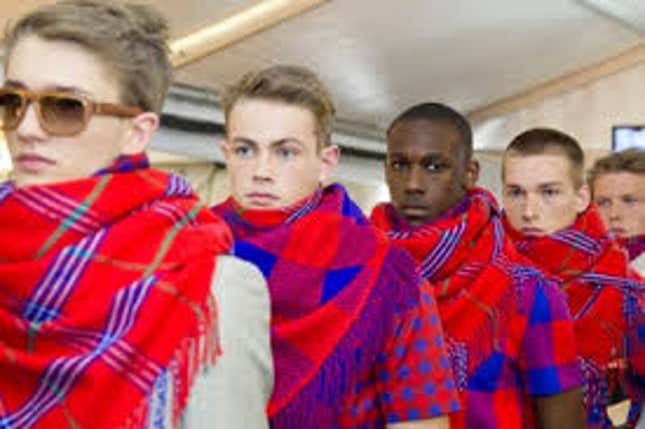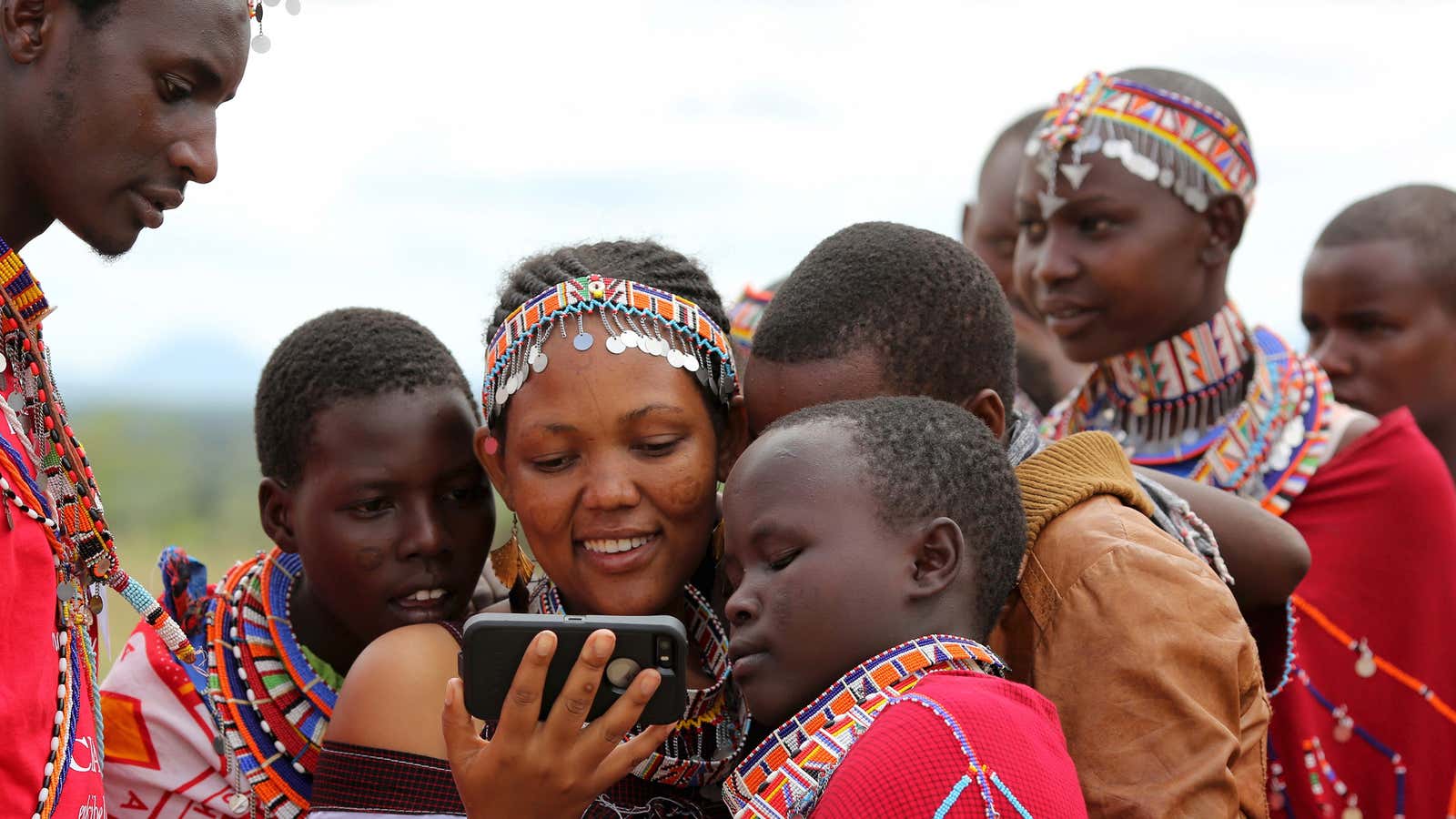The Maasai of Kenya and Tanzania have a distinctive look that is widely imitated. Their style and name alike have been used by high-end designers such as Louis Vuitton, manufacturers like moccasin maker Minnetonka, and many more. You can buy a “Maasai” bathing suit for $300, or a “Maasai mosh dress” for $430, online, right now.
These items are not actually made by the Maasai people, though, nor are they compensated for anything sold under brands using their name, which has helped sell billions of dollars worth of goods worldwide over the years, according to Light Years IP, a Washington, DC nonprofit that works on public interest intellectual property issues internationally. That’s why it created the Maasai Intellectual Property Initiative (MIPI), putting businesses on notice. Companies must cease and desist referring to the trademark name Maasai or copying the signature Maasai style without a licensing agreement.
MIPI works to represent Maasai IP rights by organizing the community, gaining consensus on appropriate usage of the brand, forcing companies to obtain licenses from the Maasai to use their intellectual property, and then distributing funds as has been deemed appropriate by the people. ”Nearly 80% percent of the Maasai population in Kenya and Tanzania are living below the poverty line,” the website explains. “Yet their distinctive and iconic cultural brand and intellectual property concepts have been used commercially around the globe.”
Corporations are quick to enforce their own trademarks and copyrights to ensure their famous brands aren’t diluted. In 2012, Louis Vuitton’s spring/summer collection copied Maasai colors and patterns and created controversy about cultural appropriation by international giants who really should know better.
Here’s an example of how copyright and trademark work in this situation. Burberry—like the Maasai—have a signature check, and a distinct name that has positive associations in consumers’ minds, connected with their brand. They defend their name and pattern with IP enforcement action. The Burberry plaid can’t be copied, and the name is so famous it belongs exclusively to the British brand.
The Maasai are saying that companies borrowing traditional designs and patterns of cloth and beading, as well as their name, should pay for the privilege or desist, just as Burberry would demand. But IP rights have to be enforced by those who claim them. There’s no international IP police that will ensure justice, but there are rules and forums for making claims internationally. Each claimant must prosecute their own cases, and claims can be lost if people sleep on their rights too long. In practice and principle, IP law rewards those who promptly police their rights themselves, which is why the initiative organized the Maasai.

MIPI consults with the Maasai through community boards and gatherings on appropriate usage of the cultural brand to ”regain control” of it in ways approved by the people. The initiative is ambitious, an effort to turn a people across two countries into one unified whole, armed with attorneys. MIPI has even drafted a Maasai constitution.
The Guardian asked in 2013 if it is ethical for people who inspire creations to go uncompensated while wealthy giants make millions of dollars from their cultural heritage. MIPI answered that question, and took it further: they’ve quantified exactly how much the Maasai are owed. It’s calculated that about 80 companies are currently infringing and that the Maasai people should be collecting $10 million in licensing fees annually.
The first step in enforcing intellectual property rights is demanding that infringers cease and desist or enter a licensing agreement. The initiative writes letters making those demands and also engages in lobbying, cultivating connections, for example, with the African IP Trust, that can help put pressure on infringers. The website warns, “MIPI is supported by powerful friends who understand that Maasai Intellectual Property belongs to the Maasai.”
